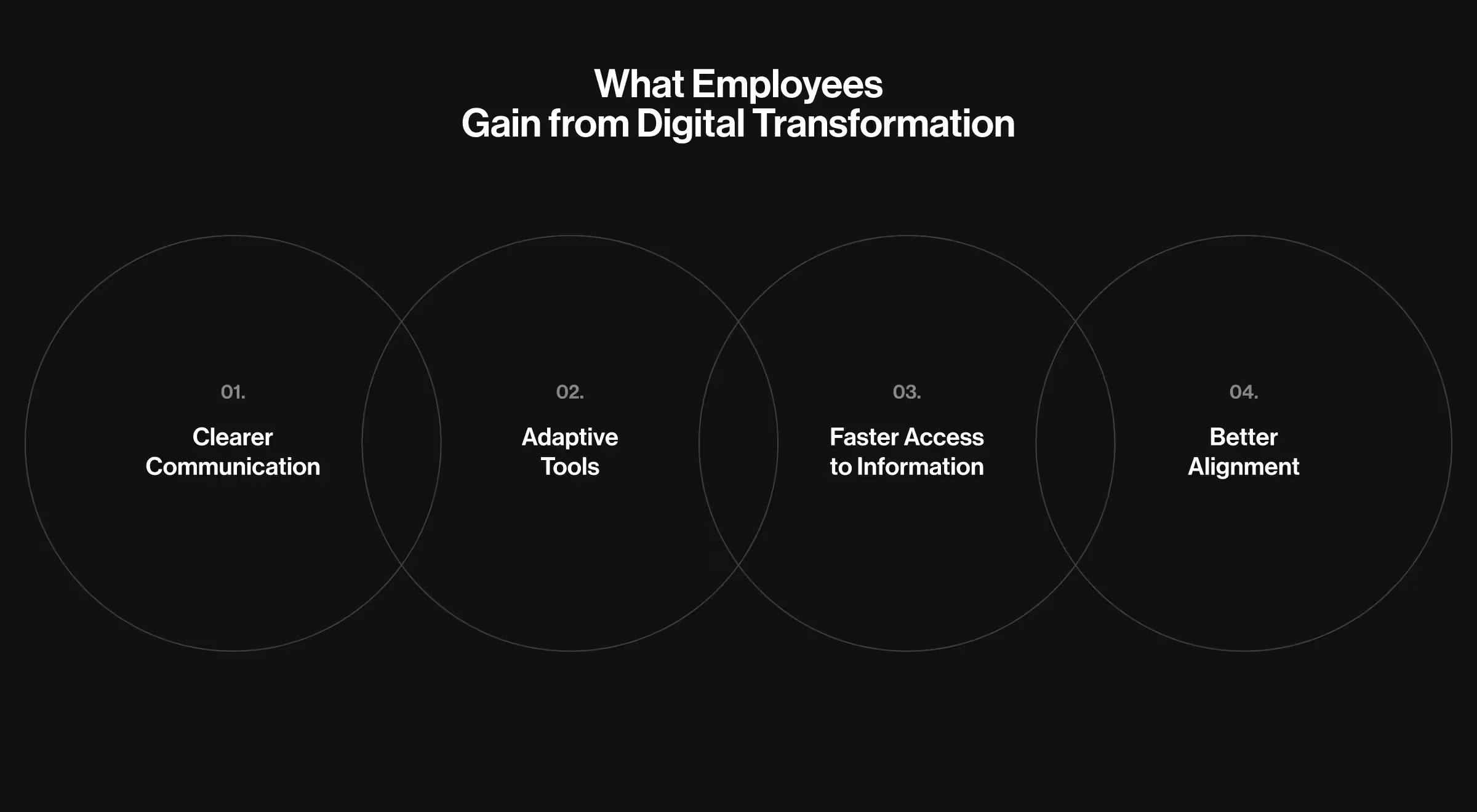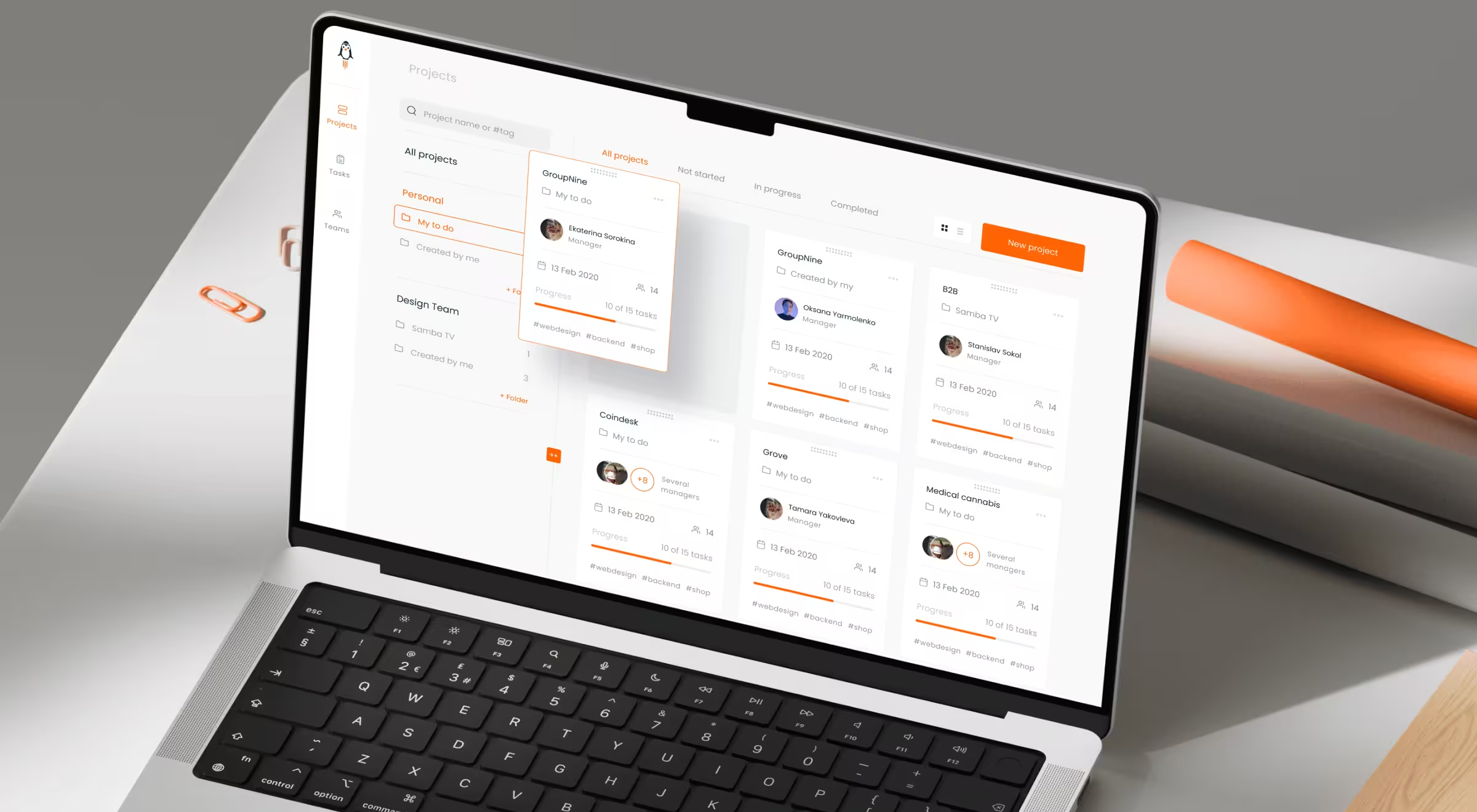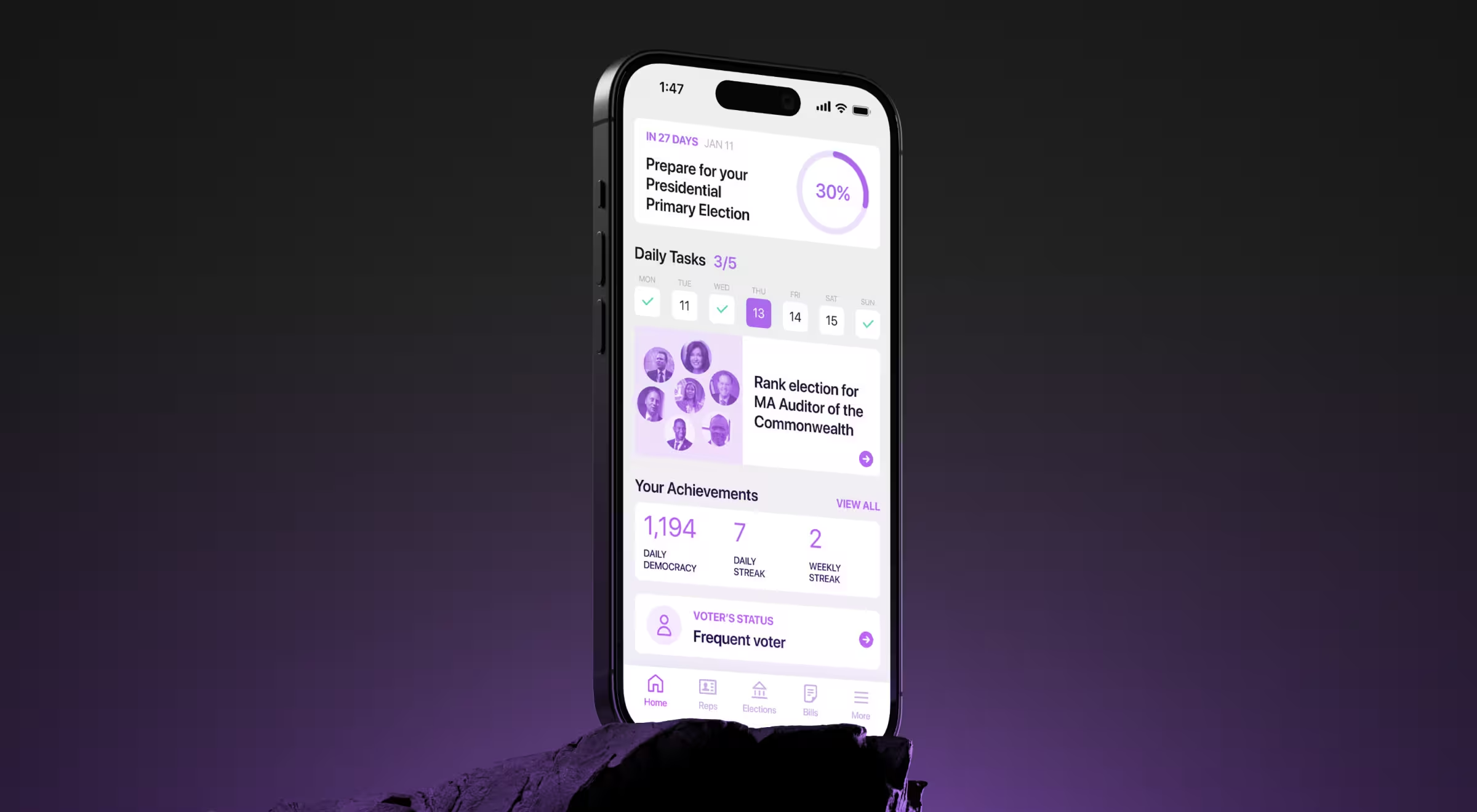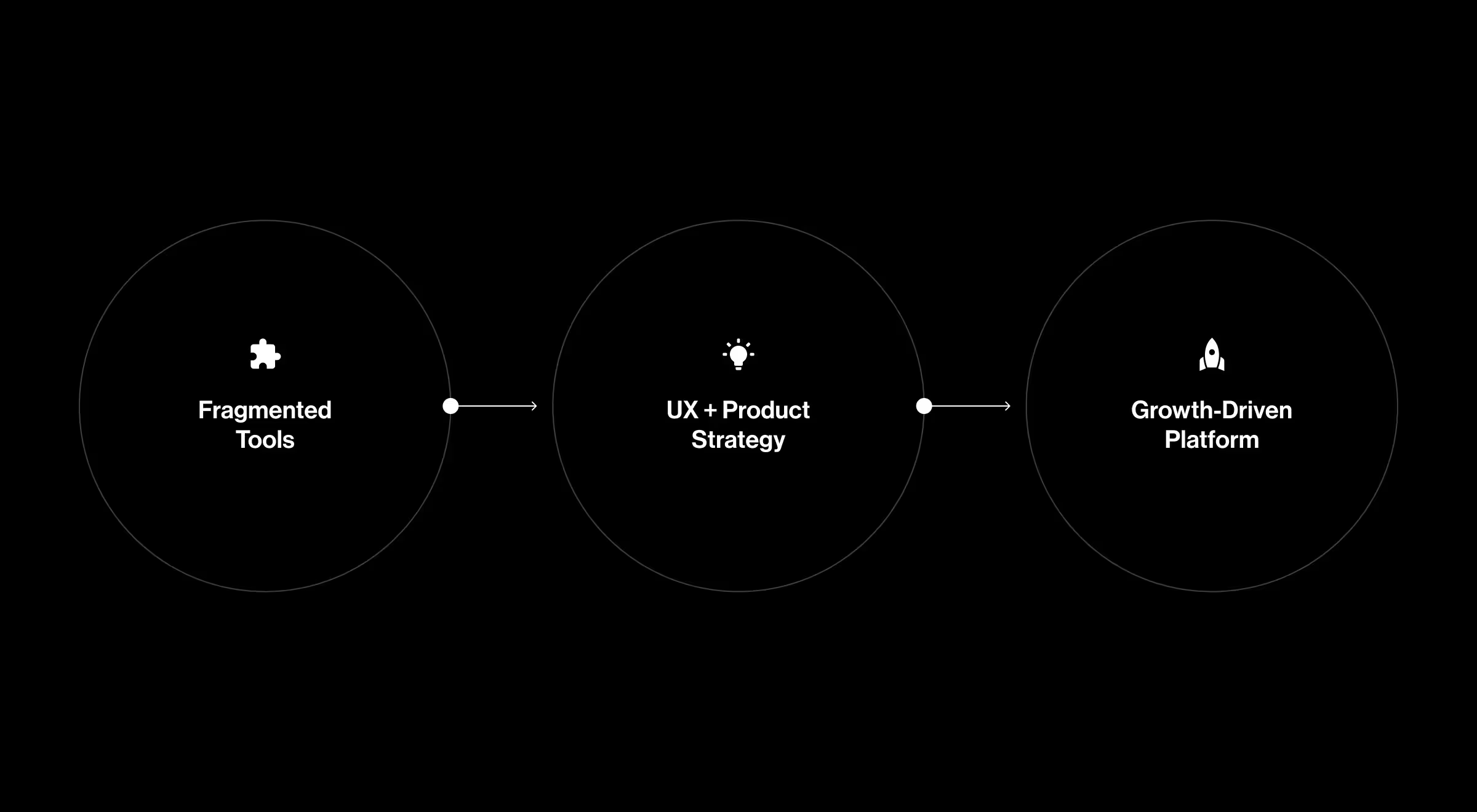What can $3.9 trillion really achieve? Deloitte projects that global spending on digital transformation will reach this figure by 2027. The number signals a fundamental shift in business operations: how companies deliver value, how teams operate, and how every user interaction feels. And it highlights why the benefits of digital transformation now sit at the core of competitive growth.
At Lazarev.agency, we turn that ambition into working products. Startups come to us when they need to scale. Enterprises arrive when complexity slows them down. Our role is to expose friction, rebuild product logic, and weave adaptability into each release from day one.
Across fintech, edtech, and beyond, sharp UX proves its worth: it cuts effort, accelerates decisions, and anchors platforms that grow with their users.
Key Takeaways
- Successful digital transformation boosts efficiency, agility, and resilience, which is essential for adapting to fast-changing markets.
- It improves employee experience by reducing friction, supporting smarter workflows, and lowering training time.
- Strong digital systems open new revenue streams, improve retention, and make companies more scalable.
The Growing Role of Customer Experience in Digital Transformation
A Deloitte survey found that 81% of global executives view digital transformation initiatives as a strategic priority, fueled by growing demands for automation, personalization, and cross-platform consistency.
True transformation happens when technology mirrors real human behavior aligning with the pace, decisions, and needs people face in actual use.
Consider a global fintech platform handling high-value cross-border payments every day. Their rapid growth came with rising complexity: a wide user base, strict regulatory requirements, and disjointed product experiences. By rethinking their ecosystem through UX, we:
- Reduced friction
- Clarified journeys
- Helped teams stay aligned across products

This mindset shift — from deploying digital tools to designing systems around them — is what makes transformation stick. Teams that embed UX-led transformation not only improve performance but also strengthen collaboration and decision-making across departments.
“You can’t grow with analog logic in a digital world. Transformation is how companies reclaim speed, clarity, and customer relevance — in every vertical.”
{{Kyrylo Lazariev}}
Benefits of Digital Transformation for Employees
While customer-facing features often take the spotlight, employees gain just as much from thoughtful digital transformation. When internal tools are designed around real workflows, teams work faster, with fewer errors and greater confidence.
A report by Salesforce shows that 76% of employees feel more productive when using intuitive technology, while 62% say it makes them feel more valued. These are clear indicators that the benefits of digital transformation for employees extend far beyond automation.
“Internal UX keeps systems readable under pressure. It gives teams the clarity to work fast and the stability to work long.” — Kyrylo Lazariev
Beyond productivity, the benefits of digital transformation for employees include:
- Clearer communication through unified platforms
- Tools that adapt to different roles and tasks
- Faster access to relevant information
- Better alignment across departments
As work becomes more hybrid and data-driven, these internal gains make transformation both sustainable and scalable.

Digital Transformation Business Benefits
The real wins come when UX helps teams work faster and adapt without friction. A McKinsey study confirms the impact: companies that digitize internal operations can improve earnings before interest, taxes, depreciation and amortization by 20–30% within three years.
GoPingu proves the point:
- Unified Kanban and List views cut the learning curve. Teams can switch visual modes without losing context, which speeds onboarding and reduces bounce-outs.
- Inline editable project cards keep progress, deadlines, and status updates in a single place, so managers act in seconds instead of minutes.
- Team load-balancing module lets leaders redistribute tasks on one screen, eliminating bottlenecks and driving steady throughput.
- Mobile-first parity mirrors core desktop flows on phones, keeping productivity high when staff are away from their desks.

Each move removes invisible friction, letting teams ship faster and iterate continuously. When UX clears those micro-obstacles, it stops being surface polish and becomes pure business value.
The Broader Importance of Digital Transformation
Digital transformation goes beyond software. A clear signal of this shift is the rise of experience-led leadership, where design thinking guides not only product but business logic.
A 2024 McKinsey report found that companies with advanced design maturity grow revenue and shareholder returns nearly twice as fast as their competitors. These are the firms where strategy isn’t siloed from execution, and where UX plays a central role in bridging them.
Our work with Activote, a civic engagement platform, shows what this looks like in practice. We transformed overwhelming election data into interactive charts, gamified achievements, and a Vote Ready dashboard that nudges citizens toward real participation. A shorter, clearer onboarding flow now keeps new users engaged instead of dropping out.

“Digital transformation starts when teams shift their priorities. UX becomes the lens for every decision, and that’s where outcomes begin to change.”
{{Kyrylo Lazariev}}
This is the real importance of digital transformation: it creates systems that adapt, scale, and sustain. As industries grow more complex, companies that align people, data, and product logic gain a clear edge.
Building Products for Business Growth
Across sectors, design connects bold strategy with execution on the ground. Functional tools are no longer enough. Impact comes from systems that serve people at scale and respond to real-world demands of modern business models.
Tools alone are no longer enough to improve productivity or expand into new markets. It takes digital systems that turn intent into execution — fast, aligned, and measurable.

Through our product growth design services, we help companies move from fragmented digital technologies to experience-driven solutions that adapt, inform, and align with business priorities.
Let’s build digital products that work for your teams, your users, and your business goals.




























.webp)














.avif)
.avif)
.avif)
.avif)
.avif)
.avif)
.avif)